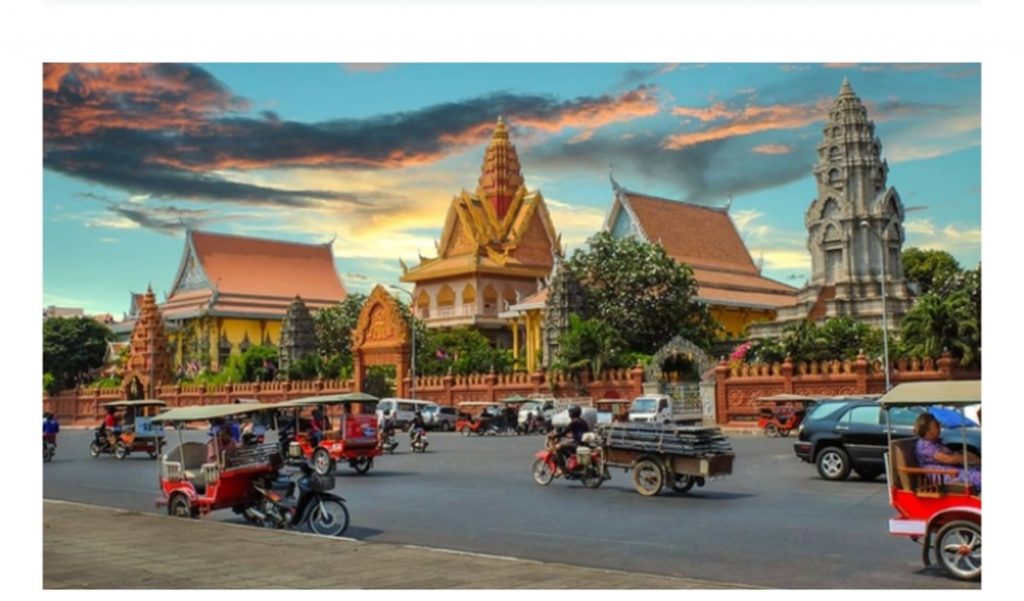1. Sri Lanka
Sri Lanka celebrates several public holidays throughout the year. Some of the major ones include.
a. Sinhala and Tamil New Year (mid-April): This is one of the most important cultural festivals in Sri Lanka and celebrates the traditional New Year according to the Sinhala and Tamil calendars. It involves various rituals, family gatherings, traditional games, and customs.
b. Vesak Poya (May): Vesak, also known as Buddha Purnima, commemorates the birth, enlightenment, and death of Gautama Buddha. It is a significant religious holiday where temples are decorated, devotional activities take place, and lanterns are lit.
c. Independence Day (February 4th): Sri Lanka gained independence from British colonial rule on this day in 1948. It is celebrated with lag-hoisting ceremonies, parades, cultural performances, and various patriotic activities.
d. Christmas (December 25th): Although primarily a religious holiday celebrated by Christians, Christmas is recognized as a public holiday in Sri Lanka. It is marked by church services, festive decorations, exchanging gifts, and family gatherings.
2. Myanmar
In Myanmar, several public holidays are observed, reflecting the country’s rich cultural heritage and religious diversity. Some significant holidays include.
a. Thingyan (April): Also known as the Water Festival, Thingyan marks the Burmese New Year. It is a time for joyous celebrations, water throwing, parades, and religious rituals to cleanse and purify the soul.
b. Independence Day (January 4th): Myanmar celebrates its independence from British colonial rule on this day. It includes flag hoisting, parades, cultural performances, and other patriotic activities.
c. Thadingyut Festival (October): This festival marks the end of the Buddhist Lent period and is known as the Festival of Lights. Pagodas and homes are illuminated with colorful lights, and there are processions, dance performances, and fireworks.
d. Christmas (December 25th): Although celebrated primarily by the Christian community, Christmas is recognized as a public holiday in Myanmar. It is observed with religious services, decorations, and festive gatherings.
3. Nepal
Nepal has a diverse range of public holidays, reflecting its multicultural society and religious practices. Some major holidays in Nepal include:
READ ALSO: 10 Longest Ruling Kings in Nigerian History
a. Dashain (September/October): Dashain is the biggest and most important Hindu festival in Nepal. It lasts for 15 days and celebrates the victory of good over evil. It involves the worship of deities, animal sacrifices, family reunions, and festive rituals.
b. Tihar (October/November): Also known as the Festival of Lights, Tihar is a five-day festival that honors the bond between brothers and sisters. It includes worship of various deities, lighting of oil lamps, colorful decorations, and the exchange of gifts.
c. Buddha Jayanti (April/May): This festival commemorates the birth, enlightenment, and death of Gautama Buddha. Devotees visit Buddhist temples, light candles, offer prayers, and participate in Buddhist rituals and teachings.
d. Constitution Day (September 20th): Nepal celebrates the anniversary of the promulgation of its new constitution on this day. It is marked with flag hoisting, parades, cultural programs, and discussions on the importance of constitutional rights and democracy.
4. Cambodia.
Cambodia has a rich cultural heritage, and its public holidays reflect various aspects of its history and traditions. Some significant holidays include:
a. Khmer New Year (April): The Khmer New Year, also known as Choul Chnam Thmey, is the most important holiday in Cambodia. It marks the end of the harvesting season and involves religious ceremonies, traditional games, music, dance, and water splashing.
b. Victory Day over Genocide (January 7th): This day commemorates the end of the Khmer Rouge regime and the overthrow of the genocidal regime in 1979. It is observed with memorial services, speeches, and remembrance of the victims of the genocide.
c. Pchum Ben (September/October): Pchum Ben is a fifteen-day festival dedicated to honoring deceased ancestors. People visit pagodas, make merit, offer food to Buddhist monks, and pay respects to their ancestors by visiting family graveyards.
d. Constitution Day (September 24th): Cambodia celebrates the anniversary of the signing of its constitution on this day. It is marked by flag-raising ceremonies, parades, cultural events, and discussions on the importance of constitutional rights and democracy.
5. Iran.
Iran observes various public holidays that reflect its history, religious beliefs, and cultural traditions. Some major holidays include.
a. Nowruz (March 21st): Nowruz, also known as the Persian New Year, is one of the most important holidays in Iran. It celebrates the arrival of spring and is marked with diverse rituals, family gatherings, special meals, and the Haft-Seen table (a traditional arrangement of symbolic items).
b. Islamic Republic Day (April 1st): This day commemorates the establishment of the Islamic Republic of Iran in 1979. It is celebrated with parades, speeches, and cultural events that highlight the achievements and principles of the Islamic Republic.
c. Eid al-Fitr (date varies according to the Islamic calendar): This festival marks the end of Ramadan, the Islamic holy month of fasting. It is a time of joy and celebration, with special prayers, family gatherings, feasts, and the giving of gifts to the needy.
d. Ashura (date varies according to the Islamic calendar): Ashura is a significant day of mourning for Shia Muslims. It commemorates the martyrdom of Imam Hussein, the grandson of Prophet Muhammad. It involves processions, ceremonial chest beating, and expressions of grief and solidarity.


2 Replies to “A Closer Look at Public Holidays in These Countries and How They Are Celebrate”